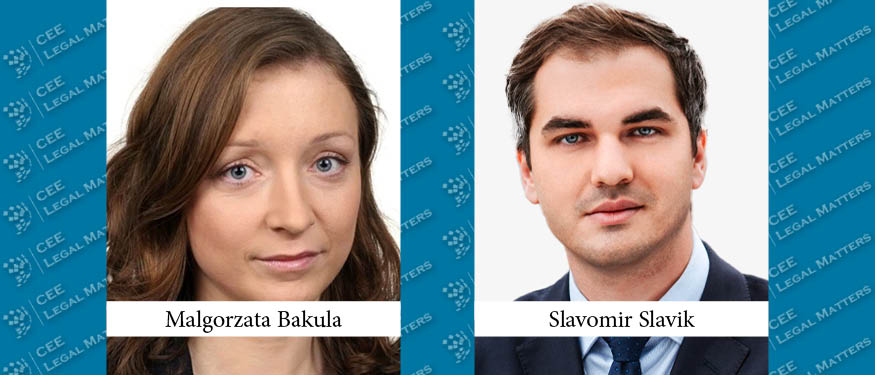As everybody knows, grid connection is a big challenge, perhaps the biggest challenge, the renewables encounter nowadays in Romania and elsewhere. According to the data available on the Romanian TSO website, over 20 GW of wind and solar projects seem to have obtained grid connection endorsement (Romanian: aviz tehnic de racordare – “ATR”) to the extent the total installed capacity in the country is about 18.5 GW and the consumption does not expect a serious take-off in the foreseeable future. An even bigger capacity might be in the queue to obtain ATR.
It is, therefore, obvious that not all these projects would be built, because that would multiply the current installed capacity in Romania in the next few years or so by a factor of 3 or 4. A great number of these projects will fail to come to life from various reasons – some would be technically or legally flawed, some others might not be feasible from a cost perspective, others will not obtain financing, etc.
The race is on, as most of these new projects are just still on paper – apparently, only 578 MW of new wind and solar projects were connected to the grid in 2023 and 25 MW in 2022. Romania’s target is to install 10 GW of new (onshore) wind and solar capacity by 2030 and we are still very far from it.
Solution or problem – different perspectives
In this situation, the current ANRE’S proposal of reshaping the grid connection procedure (“New Regulation”) is meant to be a solution to a problem that has become more and more pressing – the blocking of the available grid capacity by projects that will not see the light of day. But in practice it might also create a new problem for investors instead of offering them a solution.
In essence, ANRE proposes to replace the current mechanism of grid capacity reservation based on “first come first served” principle with a new mechanism based on annual capacity allocation auctions for 10 years ahead. The auction mechanism is the preferred rule in about everything that has to do with access to public resources (assets or money).
Thus, all seems nice and neat from a distance, but if we look closer, flaws start to be noticed by the (trained) eye:
a. The New Regulation is proposed to enter into force on 1 January 2025 and cannot be retroactive, so that all ATRs already obtained, and which will be obtained by the end of this year will not be invalidated by the New Regulation.
That means that a considerable capacity in the grid will have already been booked by the end of this year, not leaving much available capacity for the allocation auctions starting with 2025. Given that an ATR remains valid for 18 months during which time the investor must obtain the building permit for the project, only starting with 2026 might the current ATRs and the ones obtained by the end of 2025 progressively lose their validity up until mid-2027, thus freeing up space for connection of new projects. Apart from the above, there might be other projects that will obtain the building permit in time for maintaining the ATR valid, but which will not be financed/built in the end, thus losing the ATR but at a later time, during which they block available capacity as well.
Consequently, it is possible that most of these auctions might be seen starting as late as 2027 and the current grid situation will not change until then. Therefore, from this perspective, the New Regulation may come a bit too late, given the 2030 targets set by the EU legislation and undertaken by Romania.
b. The auction mechanism might trigger an increase in the overall connection costs. This is mainly because the bids must start from the minimum costs determined by the global solution study performed by the grid operator for deep connection works (Romanian: lucrări de întărire) at each grid zone level, but a strong competition is expected to push the bids prices up, and, thus trigger final connection costs possibly over the level that would have been paid under the current framework.
Also, it is not entirely clear how the bid price is correlated to the grid connection costs defined by the grid connection regulation, but it would seem that it corresponds to the component of the shared deep connection works (i.e., those required to allow for the connection of several projects).
c. Given the uncertainty of the competitive process and the potential blockage of capacity until 2027 (as explained in points a) and b) above), the price of the current projects with a valid ATR might increase and speculation might even be encouraged on a short term.
d. Moreover, the proposed auction mechanism may block the ATR issuance in areas where there is no available capacity without deep connection works.
Indeed, the New Regulation implies that an auction will be held if there is available capacity without any deep connection works in the grid zones pre-defined by the TSO, such available capacity being determined by the TSO according to the relevant ANRE procedure for the calculation of available capacity. The TSO has already pre-defined 10 zones for which it calculates the available capacity, which is weekly published on its website (expected to also be used for the auction purposes) and, currently, in 2 out of these 10 zones the available capacity is zero. Therefore, the capacity allocation auction should not take place in such areas as long as the available capacity is zero, although projects could be physically connected with deep connection works.
e. Also, the New Regulation proposes the introduction of a guarantee payable before the ATR issuance, amounting to 5% of the connection fee, as opposed to a guarantee of maximum 20% of the deep connection works component of the connection fee and payable until the conclusion of the connection agreement, as per the current legislation. Such guarantee might be lower in many cases than the current one, so that it may not discourage speculative projects other than by the fact that is payable before securing the ATR.
Nevertheless, such centralized auction process managed by the TSO has its merits that cannot be overlooked:
a. It offers the TSO a control over the capacity to be absorbed in the grid and an overall picture of the grid development needs based on production side demand. The fact that capacity auctions might not take place in overloaded grid zones could allow the TSO to manage a balanced development of the grid, which, in Romania, generally shows a mismatch between the production areas targeted by renewable investors and the consumption areas where the large industrial consumers are located.
b. The application of a guarantee in a fixed percentage to everyone seems more equitable than the current system, which allows the grid operator to set the percentage of the guarantee within the limit of a 20% cap, thus, triggering a risk of discrimination between investors.
c. The capacity auction mechanism may solve an old problem of the current connection process, which is the lack of clear priority rules/criteria to be applied when several competing projects in the same area have ongoing connection procedures opened.
In essence, it is not clear who should bear the costs of the deep connection works under the current “first come, first served” rule, as it is difficult to establish who has priority if there are no detailed and clear legal rules/criteria for that. This is a problem acknowledged by ANRE and the Competition Council in their report on barriers related to grid connection of renewable projects, which was published last year.
However, the auction mechanism offers an integrated framework where all connection requests will be processed and the costs of the deep connection woks will be shared by all winning bidders, with a clear timeline and commitments from both investors and grid operators as well as associated sanctions to enforce such obligations.
d. While Romania must simplify the permitting procedures for renewables until July 2024, as required under RED III, the New Regulation seems to meet, to an arguable extent, such a target, at least due to the fact that it offers predictability of the steps and a transparent common background for all investors.
On the other hand, this auction procedure is a one more (critical) step adding up to the other existing grid connection steps, so that it hardly seems a simplification.
Conclusions – the clock is ticking
To call the New Regulation a “paradigm shift”, borrowing the concept used by Thomas Kuhn to explain the pattern of scientific revolutions, is perhaps not an overstatement, as the New Regulation changes the grid connection model to a major extent.
However, the implementation of the auction mechanism should not come as a big surprise, since the possibility for ANRE to regulate such mechanism has been already provided by Government Emergency Ordinance No. 143/2021, so it was just a matter of time to happen eventually.
The New Regulation was subject to public consultation until the end of February, but the time horizon for its approval remains uncertain. However, it is expected to be enacted in the coming months.
Meanwhile, the investors are anxious to see in what waters must they navigate towards 2030, which is drawing closer - the clock is ticking.
By Cosmin Stavaru, Partner, Bondoc si Asociatii














